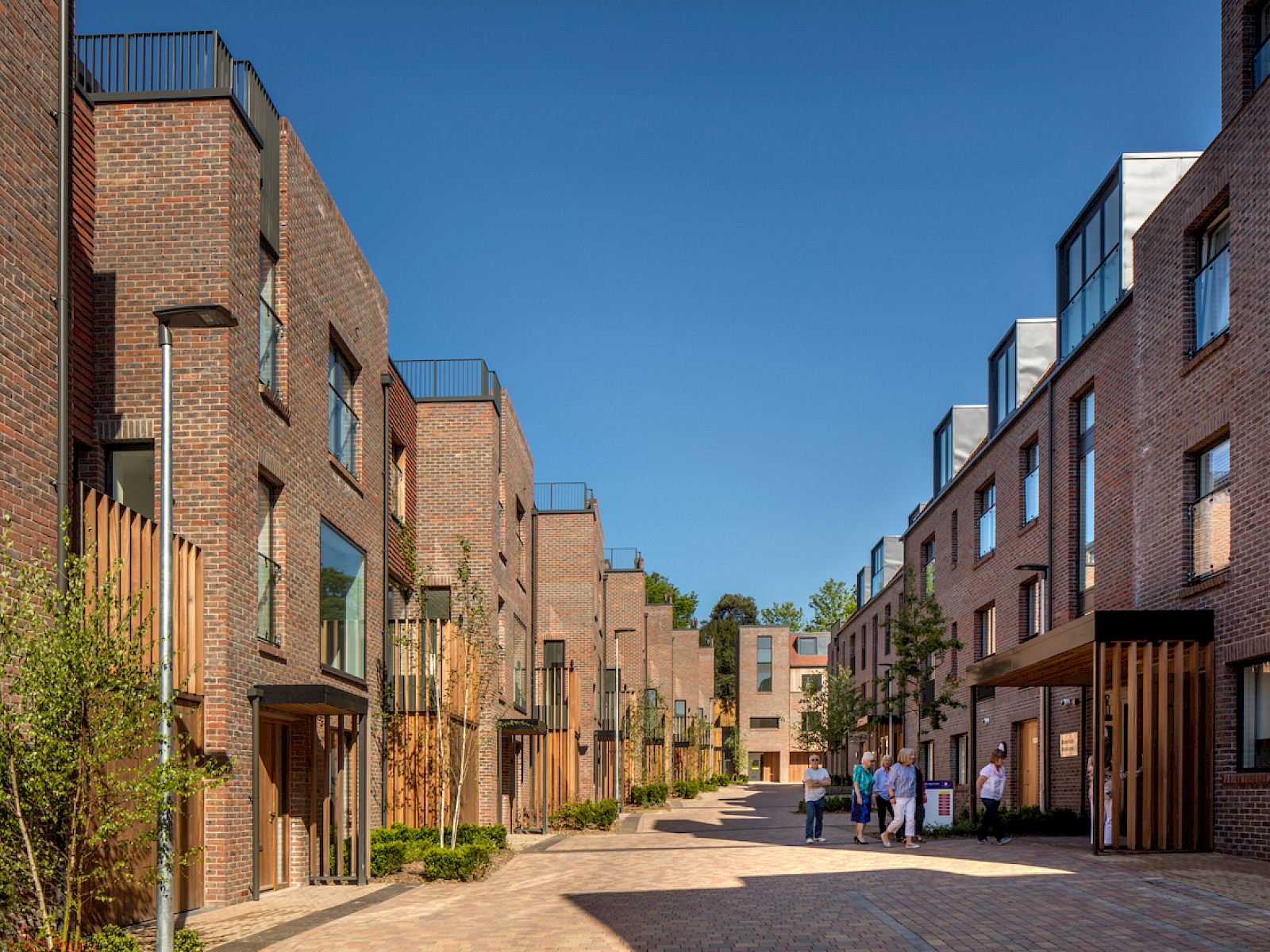OPINION: Procurement

Author: Andrew Beharrell, Senior Partner
As part of a Housing Forum initiative to find a different approach to procurement, Andrew Beharrell was asked to comment on which form of construction procurement is best able to deliver good design.
What do we mean by good design? We might mean:
- Compliance with regulation, including fire safety
- Lack of defects
- Durability
- Convenience and comfort
- Brand status
All these can be captured by a decent brief and reference to published regulation and guidance - but compliance does not equal quality – it is the starting point for quality. Compliant places can also be soulless and utilitarian.
We ask our project teams three questions:
- Where’s the joy?
- Would you like to live here?
- What’s special about this place?
We also tell them: ‘Never forget that every unit will be someone’s home’. If we can all focus on the user – our customers – then we have a better chance of delivering popular and delightful homes and neighbourhoods.
You may think this is predictable fluffy architect stuff – and yet this government has commissioned and endorsed the report ‘Living with Beauty’, which contains 45 specific provisions to promote ‘health, well-being and sustainable growth’. Many of these are likely to be secured through the planning system and a National Model Design Code.
Implementing the government’s vision of Beauty has been delayed by recent events, but it’s coming – and the pandemic is a forceful reminder of the importance of quality in our homes and neighbourhoods – our living conditions have a direct impact on how we are coping.
So, which forms of procurement are better able to deliver holistic quality?
The procurement spectrum ranges from buying an off-the-shelf product to commissioning a bespoke building. In my view these two ends of this spectrum are best able to deliver quality – but nearly all our housing procurement lies somewhere in between.
When we choose to buy a modular house - usually after some comparison shopping – we know what we are getting and we expect our purchase to match the quality standard in the sample. We expect a product to be certified and rigorously tested through prototyping - whether it’s a pair of shoes or a building. With housing, this applies most obviously to off-site construction– but it could apply to standardised quality-controlled designs assembled on-site.
By contrast, if we want a unique building, then we expect our design team to detail and specify precisely what we want - sufficient for a contractor to price and deliver precisely what we expected. That is traditional procurement: it was normal in housing until 30 years ago and is still common in high-end domestic projects.
Traditional procurement – especially for housing associations and councils – proved to be expensive and prone to contractual disputes. When the government tightened up the funding regime in 1989, our clients rapidly adopted design and build procurement to control cost and transfer their risk – and by and large it has done that.
Has it produced quality? Sometimes, yes, but I would suggest that is despite the procurement method not because of it. It has been down to committed and talented people – clients, contractors, suppliers and consultants – to produce good collaborative outcomes whatever the formal constraints of the contract.
Three decades have seen numerous efforts to invent D&B variants, which try to square the circle between time, cost, risk and quality. The PPC 2000 Partnering contract was far from perfect, but it probably got closest.
There are certain consequences of design and build procurement which are hard to reconcile with a commitment to design quality. Here are just three of them:
- Definition of the required product is deliberately left imprecise at the time of tender, to enable the contractor to ‘complete the design’ - after fixing the price. It should be no surprise when we do not always get the quality we expected.
- Price is nearly always the main factor in winning a contract. This puts pressure on contractors to trim margins and then try to rebuild them through supply chain competition. At its worst this leads to the substitution (sometimes several times over) of details and products for inferior ones, which are claimed to be equivalent.
- A generation of housing architects (and maybe other consultants and construction managers?) has become remote from building sites and deskilled in construction. Switching design teams mid-project has led to the emergence of separate planning and delivery practices - the opposite of the ‘golden thread’. We need omni-competent designers who will integrate the means of construction into the earliest design concepts – and architects need to show that they can indeed deliver a full service.
What’s the answer? For my practice, there are three parallel ways forward:
- We will continue to make the best of the current flawed system, working with clients, consultants and contractors, building long-term relationships and mutual respect.
- We will be delighted to design and deliver bespoke buildings and places for those who can afford this service.
- We will shift a significant part of our work towards ‘housing as product design’ – creating, testing and intelligently replicating standardised components, which can be combined and varied to make distinctive and popular homes and places.
Earlier in this talk I stressed the importance of a holistic understanding of quality, to counter the tendency in our industry to focus on measurable outputs: cost, risk, defects etc. This approach risks undervaluing the things which are harder to measure, but ultimately underpin our whole purpose: health, well-being and happiness.
That risk is present in this Housing Forum review: are we really committed to finding ‘’A different approach to procurement’’ or just to improving the current system a bit?






